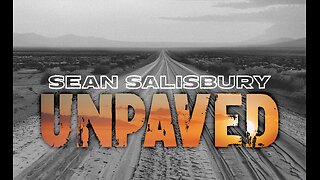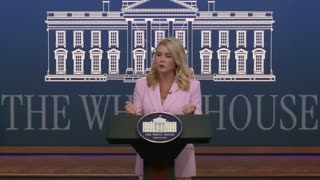Premium Only Content

top 5 Odisha cyclones
Odisha (English: /əˈdɪsə/,[12] Odia: [oɽiˈsa] (audio speaker iconlisten)), formerly Orissa (/ɒˈrɪsə, ɔː-, oʊ-/[13] the official name until 2011), is an Indian state located in Eastern India. It is the 8th largest state by area, and the 11th largest by population. The state has the third largest population of Scheduled Tribes in India.[14] It neighbours the states of West Bengal and Jharkhand to the north, Chhattisgarh to the west, Andhra Pradesh to the south. Odisha has a coastline of 485 kilometres (301 mi) along the Bay of Bengal.[15] The region is also known as Utkala and is mentioned in India's national anthem, "Jana Gana Mana".[16] The language of Odisha is Odia, which is one of the Classical Languages of India.[17]
The ancient kingdom of Kalinga, which was invaded by the Mauryan emperor Ashoka (which was again won back from them by king Kharavela) in 261 BCE resulting in the Kalinga War, coincides with the borders of modern-day Odisha.[18] The modern boundaries of Odisha were demarcated by the British Indian government when Orissa Province was established on 1 April 1936, consisting of the Odia-speaking districts of Bihar and Orissa Province.[18] The first of April is celebrated as Utkala Dibasa.[19] Cuttack was made the capital of the region by Anantavarman Chodaganga in c. 1135,[20] after which the city was used as the capital by many rulers, through the British era until 1948. Thereafter, Bhubaneswar became the capital of Odisha.[21]
The economy of Odisha is the 16th-largest state economy in India with ₹5.33 trillion (US$70 billion) in gross domestic product and a per capita GDP of ₹116,614 (US$1,500).[3] Odisha ranks 32nd among Indian states in Human Development Index.[22]
The terms Odisha and Orissa (Odia: ଓଡ଼ିଶା) derive from the ancient Prakrit word "Odda Visaya" (also "Udra Bibhasha" or "Odra Bibhasha") as in the Tirumalai inscription of Rajendra Chola I, which is dated to 1025.[23] Sarala Das, who translated the Mahabharata into the Odia language in the 15th century, calls the region 'Odra Rashtra' as Odisha. The inscriptions of Kapilendra Deva of the Gajapati Kingdom (1435–67) on the walls of temples in Puri call the region Odisha or Odisha Rajya.[24]
In 2011, the English rendering of ଓଡ଼ିଶା was changed from "Orissa" to "Odisha", and the name of its language from "Oriya" to "Odia", by the passage of the Orissa (Alteration of Name) Bill, 2010 and the Constitution (113th Amendment) Bill, 2010 in the Parliament. The Hindi rendering उड़ीसा (uṛīsā) was also modified to ओड़िशा (or̥iśā). After a brief debate, the lower house, Lok Sabha, passed the bill and amendment on 9 November 2010.[25] On 24 March 2011, Rajya Sabha, the upper house of Parliament, also passed the bill and the amendment.[26] The changes in spelling were made with the intention of having the English and Hindi renditions conform to the Odia transliteration.[27] However, the underlying Odia texts were nevertheless transliterated incorrectly as per the Hunterian system, the official national transliteration standard, in which the transliterations would be Orisha and Oria instead.
Odisha lies between the latitudes 17.780N and 22.730N, and between longitudes 81.37E and 87.53E. The state has an area of 155,707 km2, which is 4.87% of total area of India, and a coastline of 450 km.[57] In the eastern part of the state lies the coastal plain. It extends from the Subarnarekha River in the north to the Rushikulya river in the south. The lake Chilika is part of the coastal plains. The plains are rich in fertile silt deposited by the six major rivers flowing into the Bay of Bengal: Subarnarekha, Budhabalanga, Baitarani, Brahmani, Mahanadi and Rushikulya.[57] The Central Rice Research Institute (CRRI), a Food and Agriculture Organization-recognised rice gene bank and research institute, is situated on the banks of Mahanadi in Cuttack.[58] The stretch between Puri and Bhadrak in Odisha juts out a little into the sea, making it vulnerable to any cyclonic activity.[59]
Three-quarters of the state is covered in mountain ranges. Deep and broad valleys have been made in them by rivers. These valleys have fertile soil and are densely populated. Odisha also has plateaus and rolling uplands, which have lower elevation than the plateaus.[57] The highest point in the state is Deomali at 1,672 metres in Koraput district. Some other high peaks are: Sinkaram (1,620 m), Golikoda (1,617 m), and Yendrika (1,582 metres).[60]
The state experiences four meteorological seasons: winter (January to February), pre-monsoon season (March to May), south-west monsoon season (June to September) and north east monsoon season (October–December). However, locally the year is divided into six traditional seasons (or rutus): Grishma (summer), Barsha (rainy season), Sharata (autumn), Hemanta (dewy),Sheeta(winter season) and Basanta (spring)
-
 LIVE
LIVE
Tucker Carlson
2 hours agoCatherine Fitts: Bankers vs. the West, Secret Underground Bases, and the Oncoming Extinction Event
7,310 watching -
 LIVE
LIVE
Sean Unpaved
1 hour agoPlayoff Fever, Draft Drama, MLB Thrillers & Belichick's Plus-One
892 watching -
 LIVE
LIVE
Dr Disrespect
2 hours ago🔴LIVE - DR DISRESPECT - TRIPLE THREAT CHALLENGE - WZ, PUBG, FORTNITE
2,504 watching -
 59:34
59:34
The White House
2 hours agoPress Secretary Karoline Leavitt Briefs Members of the New Media, Apr. 28, 2025
6.35K9 -

CryptoWendyO
38 minutes agoU.S. BANKS ADOPTING XRP?! (URGENT Updates For LINK HBAR SOL)
-
 1:02:16
1:02:16
BitLab Academy
1 hour agoInstitutions Stacking Bitcoin! Altcoins Set To Pump | Key Crypto Targets & Signals
133 -
 1:02:31
1:02:31
Timcast
2 hours agoMASSIVE Power Outages His Europe, CHAOS ERUPTS, Strange Atmospheric PHENOMENON Blamed
119K120 -
 1:57:56
1:57:56
Steven Crowder
4 hours agoThere is No Trump Buyer's Remorse; Why the New Poll Numbers are a Psyop
308K217 -
 LIVE
LIVE
Nerdrotic
7 hours ago $1.50 earnedNerdrotic Nooner 482
745 watching -
 1:57:44
1:57:44
The Charlie Kirk Show
2 hours ago100 Days of Wins + Vance Interview + Tim Pool, WH Reporter | Vance, Sen. Scott, Pool | 4.24.25
38.9K4